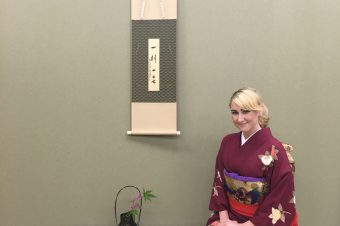What is Sendazuru?-The most beautiful Origami: Senbazuru
Have you ever heard of the story of Sadako Sasaki? The 12-year-old Sadako Sasako developed leukemia right after the atomic bomb hit Hiroshima. She tried to make 1,000 Origami cranes in order to gain a great wish. However, she died before she could finish. After her passing, her classmates continued making cranes in order to finish her work. Legend says that making 1,000 cranes grants you a wish for good health and hope.
Today, you can see these beautiful origami cranes called “Senbazuru” at many shrines and temples. It takes a lot of effort in order to finish a set of 1,000 cranes, so a Senbazuru is incredibly precious. Traditionally, it is given as a wedding gift for a newlywed couple to live a thousand years happily or as a present for a sick person to gain strength. However, sometimes, Senbazuru are also given as a present for social contribution such as winning a speech contest. Usually, Senbazuru is often made in a group, such as a school club or a music club, because folding cranes by yourself can take a very long time.
Are they any rules to consider when trying to make a Senbazuru? You are free to use whatever color you like for a Senbazuru. However, when sending it as a present for a sick person, the use of the color black can give the impression of sadness instead of the happiness that comes with bright colors. Do you really need to make 1000 cranes for a Senbazuru? It does not have to be exactly 1000 cranes, because the meaning behind “Senbazuru” is to “fold a lot.”
The Tragic End of the Senbazuru
What do you do with your Senbazuru, the beautiful origami, after a while? Can you just throw it away? A thousand-crane origami is handmade with a wish. Making a Senbazuru is a long process; therefore, you should treat it with respect. The best way to recycle a Senbazuru is by giving it to a shrine or temple to burn for you. In this way, the wish, which was given to you, goes back to its original origin and rests in peace. Check out this movie to learn more:





